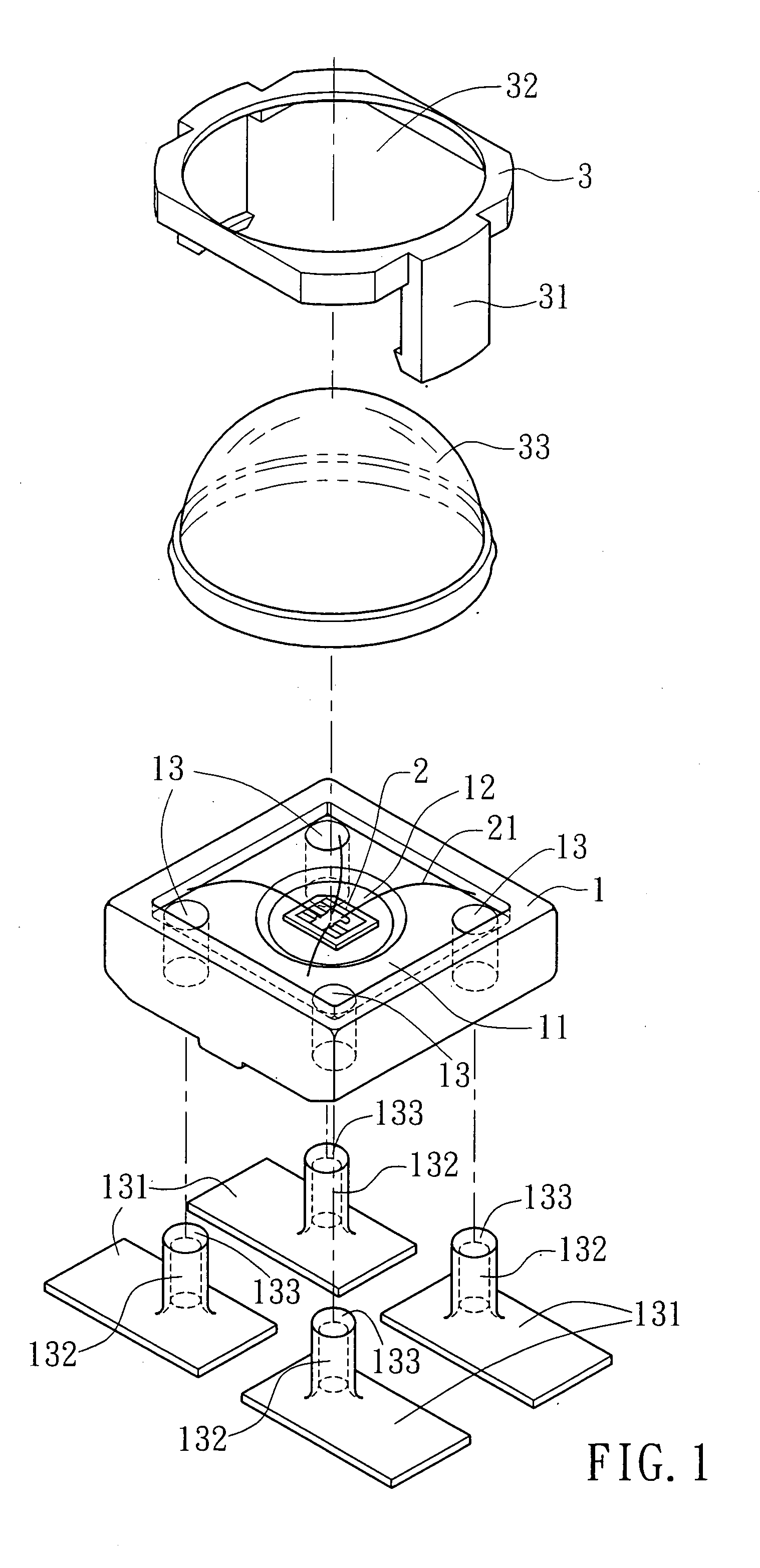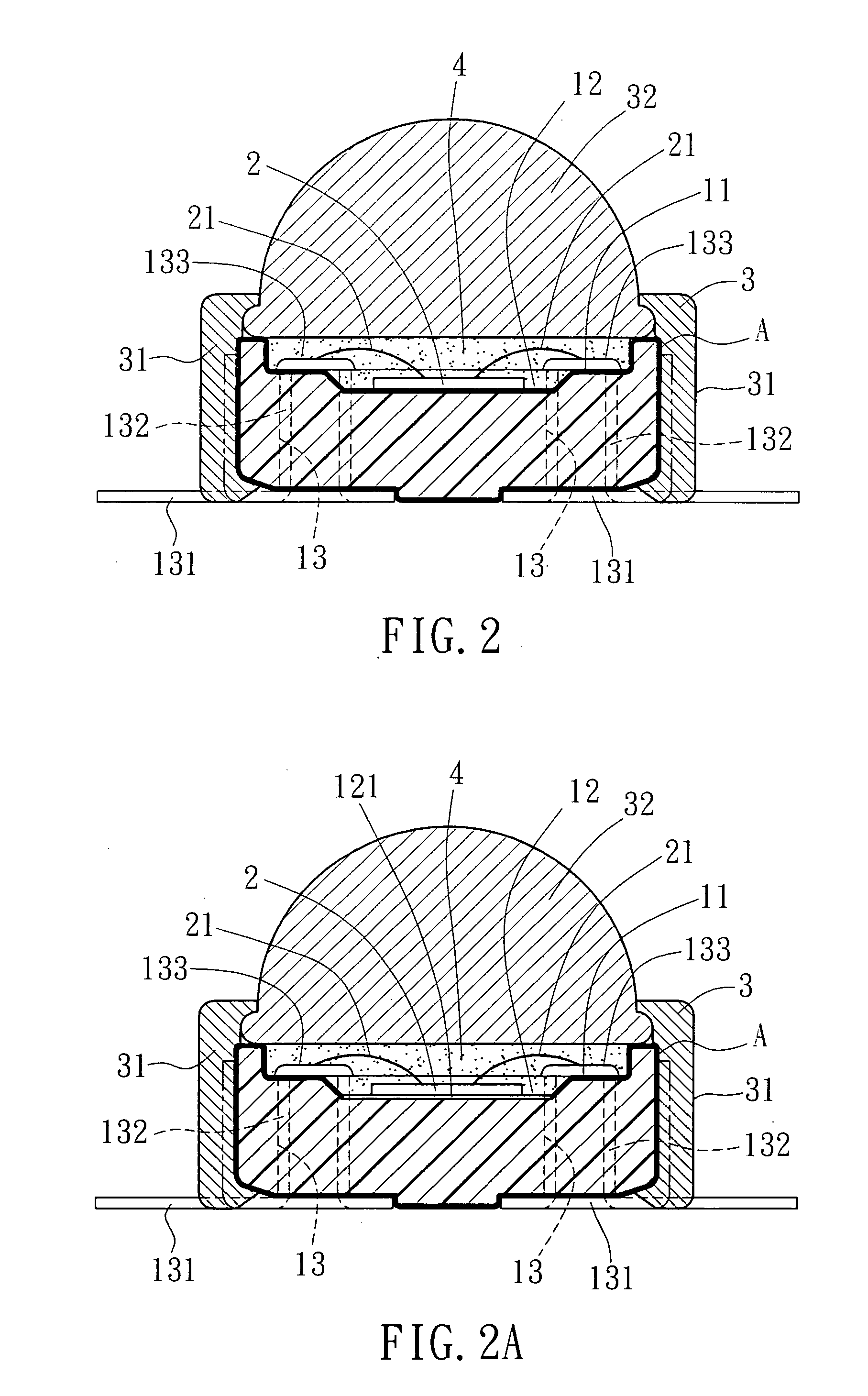LED module
a technology of led modules and modules, applied in the direction of semiconductor devices, lighting and heating apparatus, etc., can solve the problems of insufficient design, inability to quickly dissipate heat during the operation, and energy crisis, and achieve the effect of quickly dissipating hea
- Summary
- Abstract
- Description
- Claims
- Application Information
AI Technical Summary
Benefits of technology
Problems solved by technology
Method used
Image
Examples
first embodiment
[0025]Referring to FIGS. 1˜3, a LED module in accordance with the present invention is shown comprising a heat sink 1, a LED (Light Emitting Diode) 2 mounted in the heat sink 1, and a lens holder 3 fastened to the heat sink 1 and holding an optical lens 33 corresponding to the LED 2. The heat sink 1 has a top recess 11, a groove 12 formed in the top recess 11 for the mounting of the LED 2, and a plurality of mounting through holes 13 cut through the top and bottom sides. Further, the top surface of the heat sink 1 is covered with an oxidation layer A. Further, a plurality of metal conducting plates 131 are respectively fastened to the heat sink 1. The metal conducting plates 131 each have an upright shank 132 respectively inserted from the bottom side of the heat sink 1 into the mounting through holes 13. After insertion of the upright shanks 132 into the mounting through holes 13, the top ends 133 of the upright shanks 132 are hammered down to affix the upright shanks 132 to the he...
third embodiment
[0027]FIGS. 7˜9 show a LED module in accordance with the present invention. According to this embodiment, the LED module comprises a heat sink 5, a LED (Light Emitting Diode) 2 mounted in the heat sink 5, and a lens holder 3 fastened to the heat sink 5 and holding an optical lens 33 corresponding to the LED 2. The heat sink 5 has a top center recess 52 for the mounting of the LED 2, a plurality of top border recesses 51 spaced around the top center recess 52, an upright rod 511 respectively disposed in each top border recess 51, and a plurality of peripheral bottom notches 53. Further; the top surface of the heat sink 5 is covered with an oxidation layer A. Further, a plurality of metal conducting plates 512 are respectively fastened to the top border recesses 51 of the heat sink 5 and extended to the periphery of the heat sink 5. The metal conducting plates 512 each have a vertical through hole 513 respectively coupled to the upright rod 511. Further, lead wires 21 are respectively...
PUM
 Login to View More
Login to View More Abstract
Description
Claims
Application Information
 Login to View More
Login to View More - R&D
- Intellectual Property
- Life Sciences
- Materials
- Tech Scout
- Unparalleled Data Quality
- Higher Quality Content
- 60% Fewer Hallucinations
Browse by: Latest US Patents, China's latest patents, Technical Efficacy Thesaurus, Application Domain, Technology Topic, Popular Technical Reports.
© 2025 PatSnap. All rights reserved.Legal|Privacy policy|Modern Slavery Act Transparency Statement|Sitemap|About US| Contact US: help@patsnap.com



